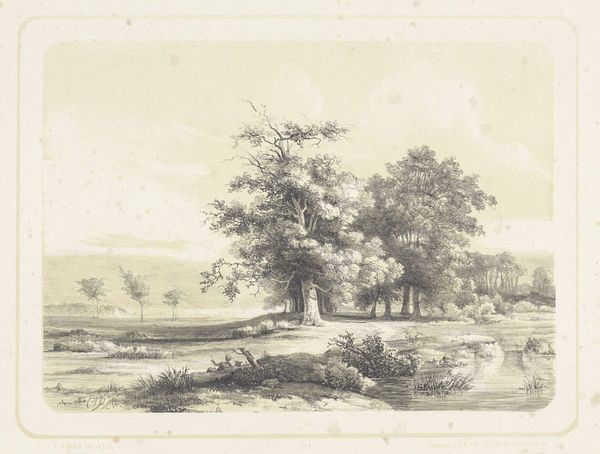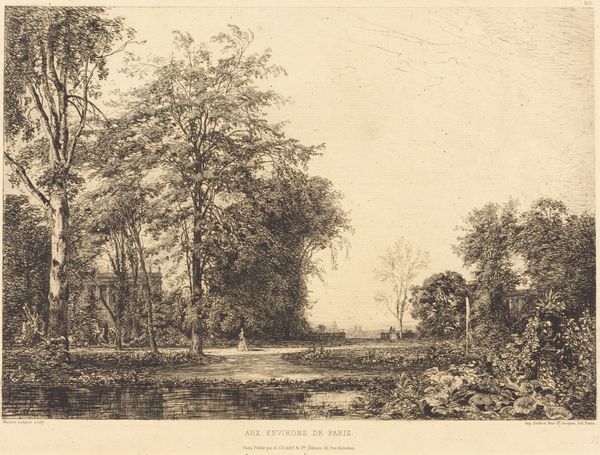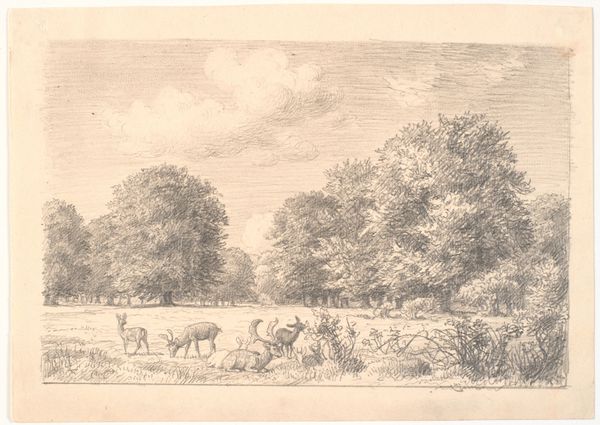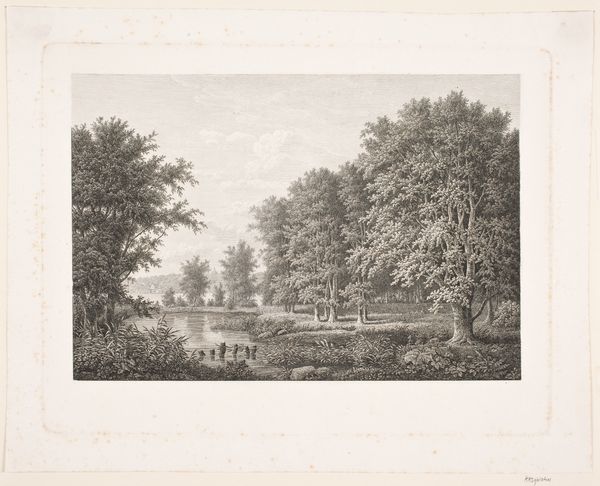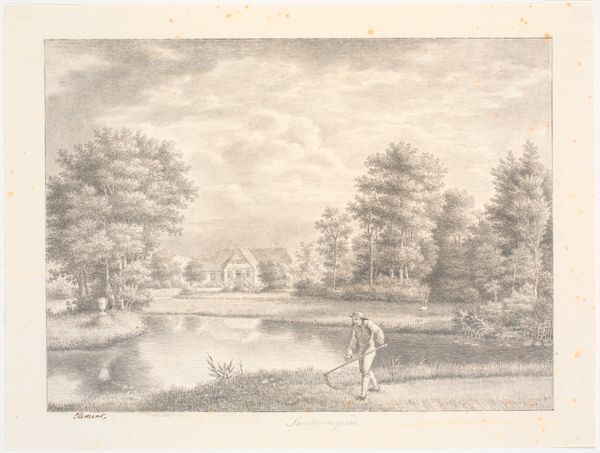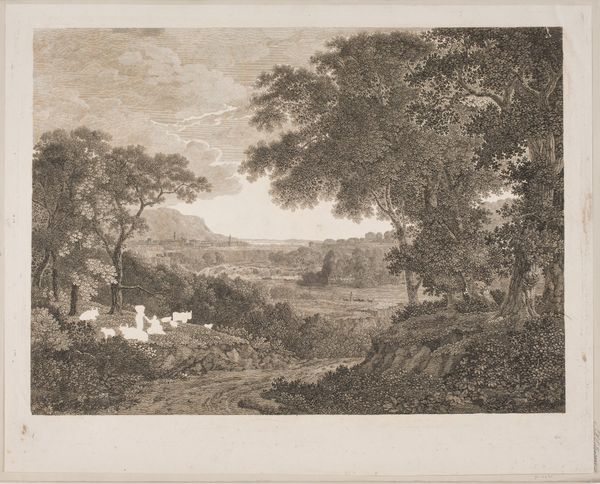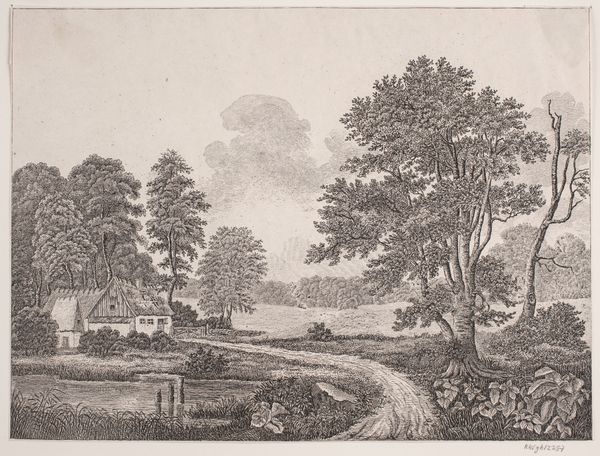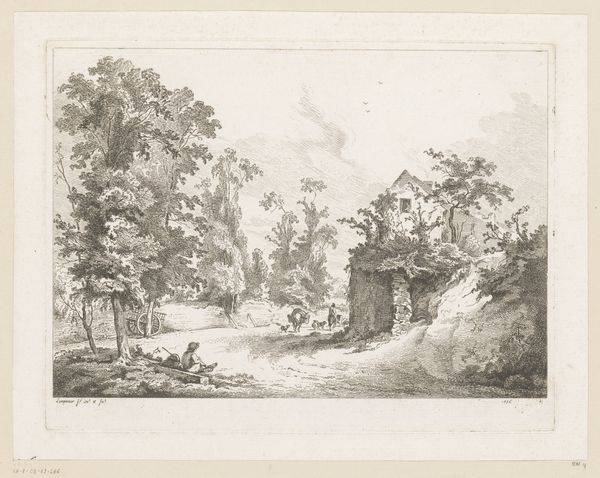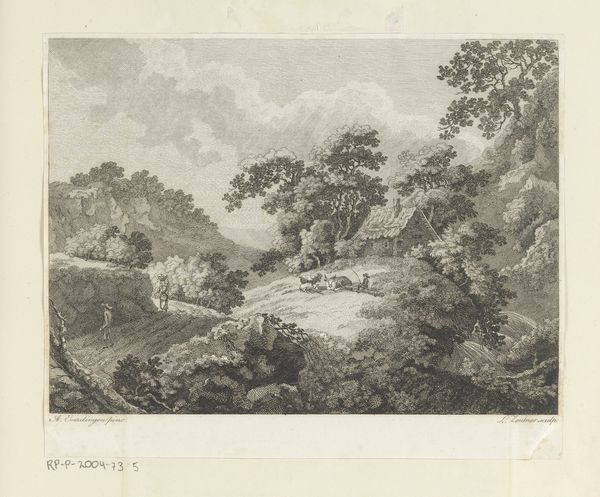
drawing, print, etching, pencil, engraving
#
drawing
# print
#
etching
#
landscape
#
pencil drawing
#
pencil
#
engraving
Dimensions: Image: 4 1/2 × 8 3/4 in. (11.4 × 22.2 cm) Plate: 5 3/8 in. × 10 in. (13.7 × 25.4 cm) Sheet: 7 in. × 10 1/2 in. (17.8 × 26.7 cm)
Copyright: Public Domain
Editor: Okay, so next up we have "The Deer Pond," an etching and engraving by Charles-François Daubigny, likely completed between 1837 and 1878. It's a pretty idyllic landscape, very detailed considering it's essentially a print. What strikes me most is the stillness... What are your initial thoughts? Curator: It's interesting that you picked up on the stillness. Daubigny, though sometimes associated with the Barbizon school, occupies a fascinating place in the history of art. This etching really highlights the shifting role of landscape during the 19th century. We see a departure from purely picturesque or romanticized depictions toward something more…real. Editor: Real, how so? Curator: Well, think about the political and social context. The rise of industrialization, urbanization…the aristocracy's diminishing role in society...Artists were grappling with representing the "real" France. Was that in the rapidly changing urban centers, or in the idealized countryside? The access to the ‘real’ became available through advancements in printmaking allowing wider audiences access to art. What purpose did art serve in this new order? How accessible *was* it to the lower classes? Daubigny found success in the establishment so perhaps he’s still somewhat aligned. Do you see any visual cues about this that might play a part? Editor: Hmmm, so not entirely breaking from tradition? Maybe the very classical composition… the placid pond in the center, the framing trees... almost a stage set. Curator: Precisely! And the inclusion of the deer. Are they simply elements of nature or do they evoke something more…perhaps aristocratic hunting traditions? It complicates that narrative of pure realism, doesn’t it? Editor: I see what you mean! It really makes you consider how the artist is positioning themselves within the societal landscape, so to speak. Thank you! Curator: Indeed. And that tension, that positioning, is exactly what makes this etching so compelling for understanding 19th-century art.
Comments
No comments
Be the first to comment and join the conversation on the ultimate creative platform.
